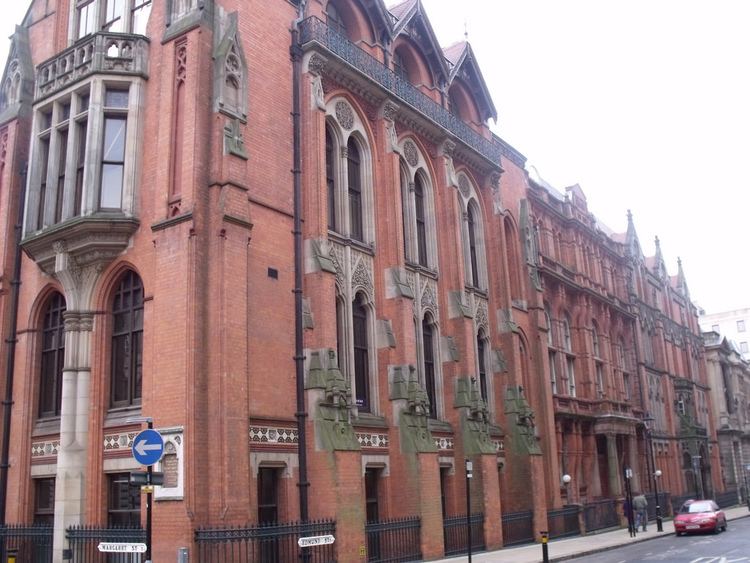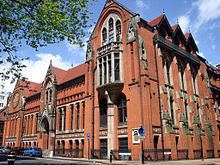Website www.bcu.ac.uk/biad | Active 1843–1971 Founded 1843 | |
 | ||
Affiliations Birmingham City UniversityBirmingham Institute of Art and Design Similar Church of the Ascensio, Erdington Abbey, St Andrew's Church, Bishop Latimer Memorial, St Francis of Assisi Church | ||
Graduate show at birmingham school of art 2015
The Birmingham School of Art was a municipal art school based in the centre of Birmingham, England. Although the organisation was absorbed by Birmingham Polytechnic in 1971 and is now part of Birmingham City University's Faculty of Arts, Design and Media, its Grade I listed building on Margaret Street remains the home of the university's Department of Fine Art and is still commonly referred to by its original title.
Contents
History

The origins of the School of Art lie with the Royal Birmingham Society of Artists, who founded the Birmingham Government School of Design in 1843. George Wallis (1811–1891), Wolverhampton-born artist and art educator, was its Headmaster in 1852–1858.

In 1877, the Town Council was persuaded by the school's energetic headmaster Edward R. Taylor to take the school over and expand it to form the United Kingdom's first municipal college of art. With funding coming from Sir Richard and George Tangye, the current building was commissioned from architect J H Chamberlain.

In 1885, the school became the first Municipal School of Art. It later becomes the leading centre for the Arts and Crafts Movement.

An associated School of Architecture was formed in 1909 and received recognition by the Royal Institute of British Architects in 1923. By the 1960s, the School had outgrown the original Margaret Street building and expanded into the campus of the University of Aston in Gosta Green.

In 1971, with the founding of Birmingham Polytechnic, the School of Art lost its independence and became the Polytechnic's Faculty of Art and Design. In 1988, this in turn absorbed the former Bournville College of Art to form the Birmingham Institute of Art and Design, the largest centre for education in art, design and the media in the United Kingdom outside London. Birmingham Polytechnic gained university status in 1992 as the University of Central England.
Building
The building cost £21,254, and was sponsored by donations from the Tangye brothers (£10,937) and Louisa Ryland (£10,000). The site was given from the Newhall estate by William Barwick Cregoe Colmore.
It is a red-brick Victorian Gothic structure, completed after its architect J. H. Chamberlain's death by his partner William Martin and his son Frederick Martin, and widely considered as Chamberlain's masterpiece. Its Venetian style and naturalistic decoration are heavily influenced by John Ruskin's Stones of Venice. The foundation stone was laid on 31 May 1884 and the building was opened in September 1885.
An extension from the north end, running east along Cornwall Street was added by Martin & Chamberlain in 1892–93.
A continuous plinth band of Doultons tilework containing lozenges lilies and sunflowers on blue backgrounds runs around the building. The original iron railings were made by Hart & Co..
In 1992, the cleaning of the exterior was completed after two years and the refurbishment and renovation of the interior began in 1993, ending in 1996. The work was undertaken by Associated Architects following completion of the Birmingham School of Jewellery also for Birmingham City University.
Alumni
David A. Hardy, astronomical art
